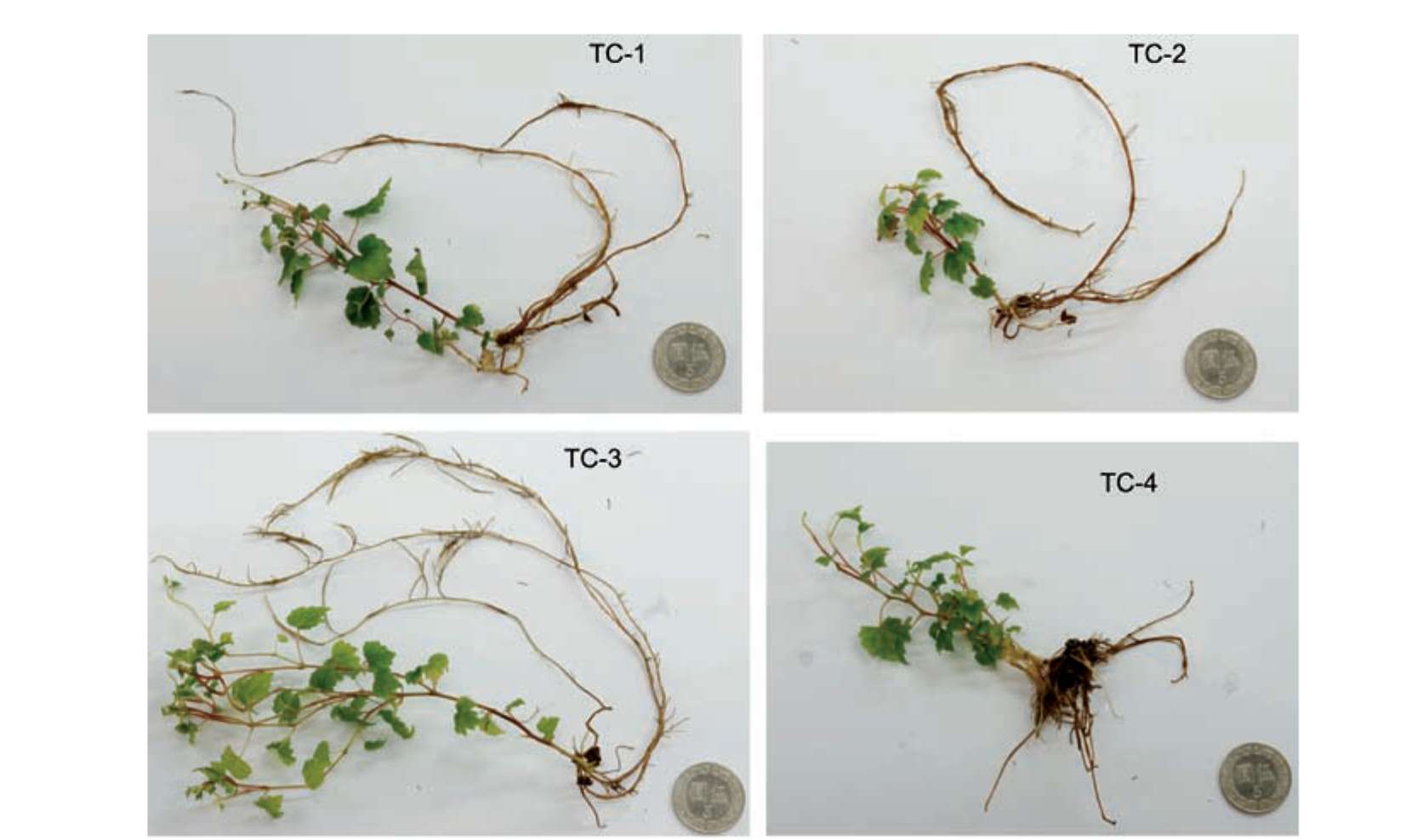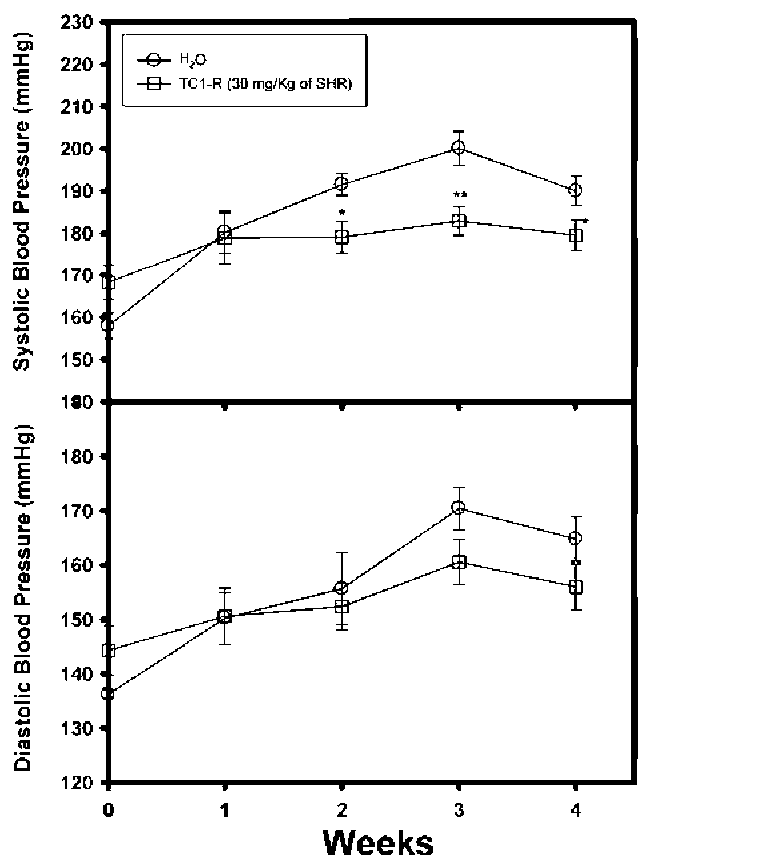HUANG et al. ― Antihypertensive activities of VTT extracts
319

Figure 1. The photographs of whole plantlet of four typers of tissue culture (TC) of Vitis thunbergii var. taiwaniana as followed: TC1, IAA (indole-3-acetic acid); TC2, IBA (indole-3-butyric acid); TC3, the control; and TC4, NAA (naphthaleneacetic acid).
Antihypertensive effects of EE-TC1-R on SHR
The effects of orally-administered EE-TC1-R by feeding tube (2.0 x 80 mm) on the blood pressure of SHR were determined (Lin et al., 2006; Liu et al., 2007; Lin et al., 2008; Liu et al., 2009a, b). All animal experimental procedures followed published guidelines (National Science Council, 1994) and reviewed and approved by the Institutional Animal Care and Use Committee of Taipei Medical University (LAC-95-0076). The male SHRs (8 weeks of age, National Laboratory Animal Center, Taipei) were housed individually in steel cages kept at 24°C with a 12-h light-dark cycle and had free acess to a standard mouse/rat chow (ProlabR RMH2500, 5P14 Diet, PMI Nutrition International Brentwood, MO) and water. SHRs were randomly divided into control and sample treatments for blood pressure determinations (six rats per group). For a short-term antihypertensive experiment, 0.5-mL of water-dissolved EE-TC1-R was orally administered to SHR (20 mg/Kg of SHR) once, and tail blood pressure was measured four times at each desired time over 24 h using an indirect blood pressure meter (BP-98A, Softron Co. Ltd. Tokyo, Japan) for systolic blood pressure (SBP) and diastolic blood pressure (DBP) measurements. For long-term antihypertensive effects, the EE-
TC1-R was orally administered to SHR once a day for 4-weeks (30
TC1-R was orally administered to SHR once a day for 4-weeks (30
mg/Kg of SHR) and the blood pressure was measured once every week before each oral administration. Before each blood pressure measurement, SHRs were warmed for 10 min in a 39°C thermostated box. The 0.5-mL distilled water was used for a blank experiment and the blood pressure was measured after oral administration of distilled water. Means of triplicates were recorded. The measured blood pressure values were collected and averaged from six rats as termed BPblank. The measured blood pressure values of each rat after being administered sample orally were collected and averaged as termed the BPsample. The six values calculated from BPsample - BPblank are averaged and then indicated as lowering effects in blood pressure changes (ΔBP) in sample at the same treatment time after oral administration (such as 2, 4, 6, and 24-h) for short-term antihypertensive activity. Means ± SD of triplicates were measured. Student's t-test was used for comparisons between blank and sample treatment at the same time interval when P< 0.05 (*) or P< 0.01 (**).
HPLC chromatogram of EE-TC1-R of Vitis
thunbergii var. taiwaniana
thunbergii var. taiwaniana
The HPLC chromatogram of EE-TC1-R was performed by XTerra MS C18 HPLC column (3.5 (m, 2.1x150 mm). The mobile phase was mixed in gradients with 95%




